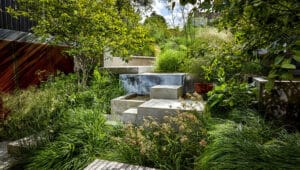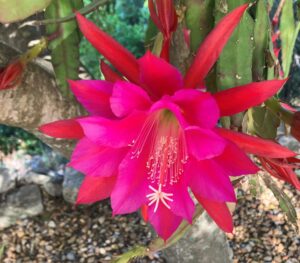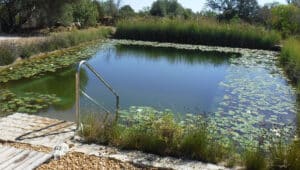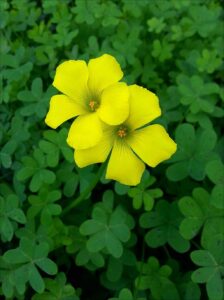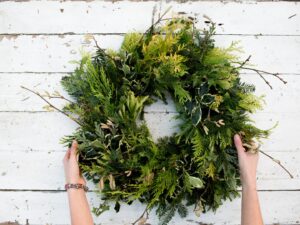So, at last we have had some really consistent rain. Within hours, plants in the garden centre are looking better, while layers of dust on roadside trees have been washed away and weeds are waking up.
Notable is Oxalis pes-caprae (Bermuda buttercup), a member of the shamrock family, whose yellow flowers and clover-shaped leaves are a winter feature along the Algarve. It is amazingly persistent and will even grow through membrane and a thick top layer of mulched tree bark. Unless you have the patience of a saint and like digging deep holes, the best cure is Roundup weedkiller. It only kills plants through their foliage and becomes inert on touching the soil – but don’t make it any stronger than on the label as it becomes less effective.
As we have had such a calm summer, now is the time to check tree ties and supports. Many trees have been planted using only bamboo canes and a much stronger eucalyptus pole may be necessary to withstand winter winds. The trend is towards using much shorter poles sufficiently long to stop the tree rocking its roots, but long enough to encourage the formation of a thick trunk.
Also, you should examine more established trees and check if poles can be removed and if ties need loosening, as trees will put on extra girth during late autumn rains. Best ties are the soft plastic straps that form a figure ‘8’ to stop the tree chafing against its pole. Recently, planted palms with tied up foliage should stay that way for a month or so until new roots are established, otherwise winds will rock them over.
Soil erosion
If you have had a new garden built since the last rains, then you will certainly see some settlement and soil movement. Rockeries need checking where soil can wash down onto lawns and borders. Heavy rain can wash soil away from around large rocks leaving plants hanging in space. Ideally, a layer of membrane should be positioned vertically along the front edge of each rockery layer, but this seldom happens. Eventually plant roots will consolidate the ground, but, in the meantime, you may have to fill gaps with small stones and rocks or dig back areas and add small pieces of plastic sheeting.
On the patio, you should make sure that any saucers under pots do not stay full of water for more than a day or so. Few plants enjoy standing in water and warning signs include yellow blotches on leaves, sagging foliage and leaf drop. It is also easy to forget to turn off irrigation systems – if you are away, then I suggest at least changing the interval to once or twice a week.
Yellow foliage may, of course, be the symptom of something else and a dose of iron chelate, either applied to the soil surface as a powder or watered in as a solution, will do wonders for yellowing bougainvilleas, solanum and hibiscus, to name but three.
Green horror
It’s amazing how some landscapers can get it so wrong. One garden centre customer asked me to look at a recently planted hedge situated about one and a half metres from two sides of her villa. She not only thought it was boring, but also suspected it would turn into a monster and how right she was! It was that old developer’s favourite Myoporum laetum– costing under one euro per plant, but turning into the Algarvean equivalent of a leyandii hedge within a couple of years. Choice of hedging depends, of course, on its function – is it to form a visual or wind barrier, is it simply to delineate a section the garden, do you want it to be evergreen or have flowers and so on.
At this time of year, one plant shining out as hedging is Tecomaria capensis (Cape honeysuckle), which can be clipped into a tight hedge or left to grow as high as eight metres up a wall. Flowers can be pale or intense orange and its evergreen foliage is serrated and glossy dark green, making it most attractive all year round. It is not fussy regarding position or soil and needs little water once established. Where space permits, it makes an attractive large shrub, but needs pruning to stop it becoming leggy. Old plants can be cut right down to ground level, yet will come back beautifully.
Another star performer for hedging in late autumn is Lantana camera, with its rough stems and intense yellow and red clusters of tiny flowers, which people seem to either love or loathe. It can be surprisingly difficult to establish here, despite its rampant reputation. Generally, lantana does not like being in pots or small planters, preferring to let its roots run free. It benefits from hard spring pruning, not too much water and only moderate feeding. The groundcover variety, Lantana montevidensis, comes in a variety of colours – yellow most commonly – and is very useful for colonising large areas. Both Lantana and Tecomaria can take salt air and thin soil making them ideal for coastal areas.
Plant of the month
If you are looking for a specimen evergreen shrub with autumn attitude, then go for Senna didymobotrya with its masses of black-tipped candles of yellow flowers and attractive leaflets. Sometimes still sold under the name Cassia didymobotrya, it thrives here in the Algarve, provided you are not in a frost pocket and can give it moderate water and well-drained soil. As it grows older, it can reach three metres tall, forming many vertical spikes from a single trunk and making a good solo plant in a circular bed cut out from calcada. Some people say that the flowers smell like popcorn, others, like me, just find the smell unpleasant!


